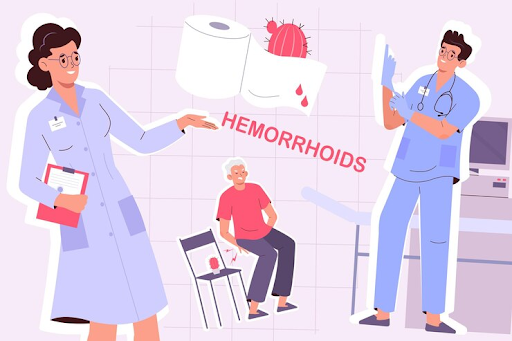Different Types of External Hemorrhoid Treatments

Hemorrhoids, also known as piles, frequently result from straining during a bowel movement. A person may push too hard, sit on the toilet for too long, or have a hard and difficult-to-pass stool. External hemorrhoids generally don’t need special care unless they develop a clot and become uncomfortable.
The majority will disappear on their own in a few days. Persistent ones may result in pain, itching, and discomfort. Home treatments can reduce these symptoms. Here, we will discuss different types of external hemorrhoid treatments.
Sitz Bath
The term “sitz bath,” which translates from German to mean “to sit,” refers to a warm water bath for the hips and buttocks. It can ease sphincter muscle spasms, discomfort, and itching. Dispensaries sell insignificant plastic tubs that are suitable over a toilet chair. Alternatively, you can sit in a standard bathtub with a few inches of warm water.
Most specialists suggest a 20-minute sitz bath after each intestine drive. It can be done two or three times a day. Take care to softly pat the anal area dry; do not vigorously rub or wipe. To dry the region, you can also use a hair dryer.
Consuming High Fiber Diet
Consuming a high-fibre diet is one of the most excellent strategies to treat your hemorrhoids. A diet that contains a lot of high-fiber foods can help to maintain your poop easier to pass. Your anus and rectum veins will be under pressure if you have to struggle to urinate. Hemorrhoids may result from this swelling of the veins.
Doctors and dieticians recommend fiber-rich foods like grains, fruits, vegetables, and beans for good health.
Colorectal Treatment for Hemorrhoids
A Rectal Specialist or proctologist is a doctor of colorectal treatments for hemorrhoids. Hemorrhoids can be treated with simple remedies at home, such as sitting in a warm bath for 10 to 15 minutes or using over-the-counter drugs. Rectal Specialists may be required to treat haemorrhoids if these treatments prove ineffective. An office setting is the most typical place to do this.
Hemorrhoids may require removal through a hemorrhoidectomy, which is an operation performed to remove them. Usually performed as an outpatient surgery, this can, however, require an overnight hospital stay or anesthesia.
Rubber Band Ligation
Your doctor will apply one or two thin rubber bands at the base of an internal hemorrhoid to stop the bleeding’s blood supply. In about a week, the hemorrhoid withers and falls off. Hemorrhage banding can be painful and result in bleeding. However, it is rarely severe; the bleeding may start two to four days after the treatment. More serious challenges can occasionally arise.
The term “sitz bath,” which translates from German to mean “to sit,” refers to a warm water bath for the hips and buttocks. It can ease sphincter muscle spasms, discomfort, and itching.
Surgical Removal of Blood Clot
The discomfort can be unbearable when an external hemorrhoid turns into a blood clot. If pain is bearable and the clot persists for over two days. Using home treatments for the symptoms is recommended while waiting for the clot to subside independently. Surgeons can perform a minor office treatment to remove hemorrhoids from the vein surgically.







